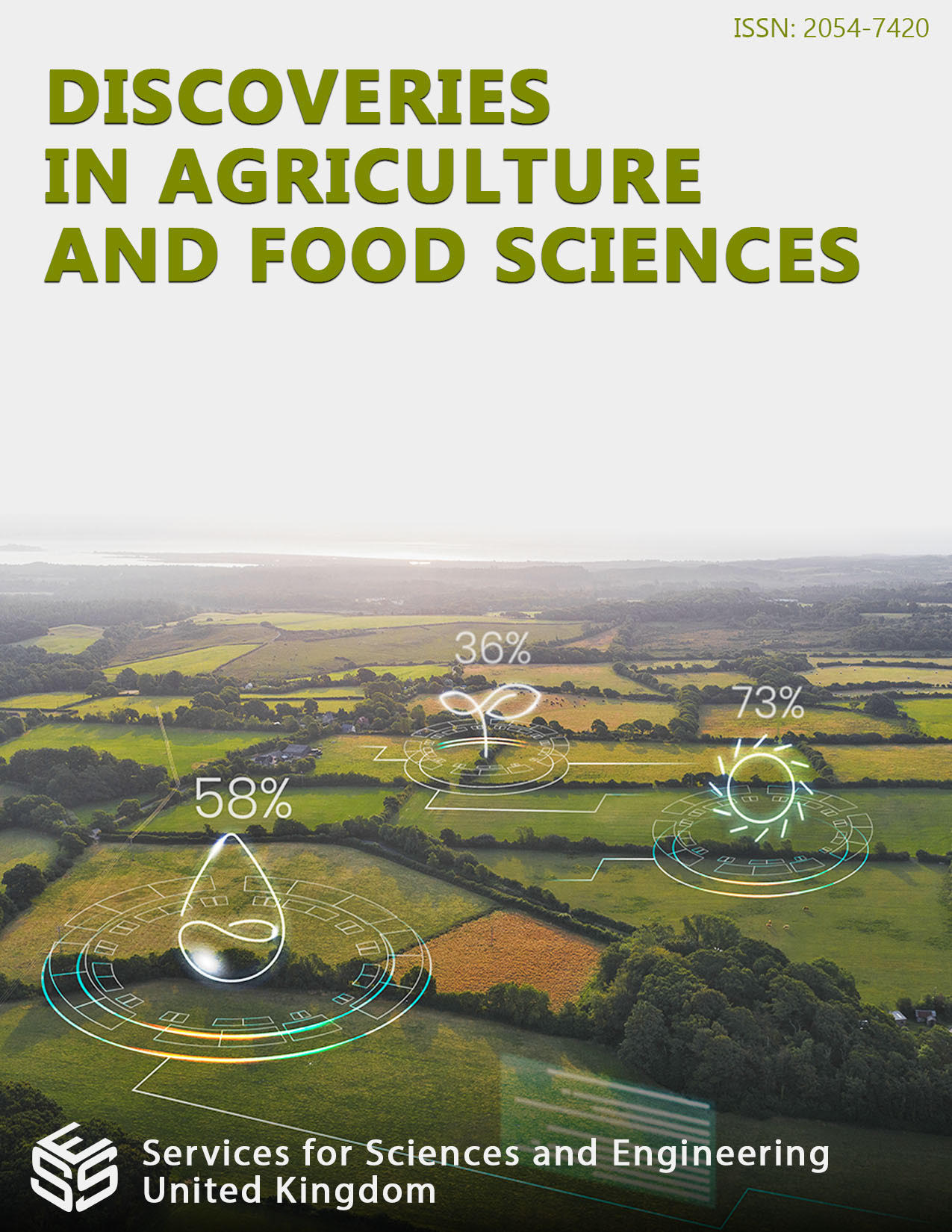Effect of Foliar Applied Kaolin on Leaves Transpiration Loss of Soybean [Glycine max (L.) Merrill] Under Irrigation in Sudan Savanna of Nigeria
DOI:
https://doi.org/10.14738/tnc.114.14970Keywords:
Hot dry season, variety, growth stage, kaolin rate and transpiration lossAbstract
A trial was conducted in the Teaching and Research Farm of the Faculty of Agriculture Bayero University, Kano (11̊ 97ʹ 98.6ʺ N, 8̊ 42ʹ 03.7ʺ E) 475 m elevation and Irrigation Research Station, Kadawa under Institute for Agricultural Research Ahmadu Bello University Zaria, Kaduna (11̊ 38'.40.3" N 8̊ 25' 53.9" E) 498 m elevation during the hot of dry season of 2019 in the Sudan savanna of Nigeria to evaluate the effect of foliar applied kaolin (antitranspirant) on leaves water loss (transpiration) of soybean [Glycine max (L.) Merrill] under irrigations. The treatments consisted of two varieties of soybean (TGX1835-10E and TGX1955-4F), three growth stages for the application of kaolin (node initiation, flower initiation and pod initiation) and application rates (0%, 3%, 6% and 9% w/v %). The factors were factorially combined and laid out in a split-split-plot design and replicated three times. Varieties were allocated to main plots, growth stages for the application of kaolin in sub plots and kaolin rates in sub-sub plots. Data collected included plant height (cm), leaf area index plant-1 at 6, 9 and 12WAS, dry matter (g), transpiration loss (mls), hundred seed weight (g) and grain yield (kgha-1) were subjected to analysis of variance (ANOVA) using Statistix-10 and significant means of treatments were separated using Tukey HSD at 5% level of probability. Variety and application at growth stage recorded non-significant effect due to kaolin application. Application of 9% kaolin indicated lowest water loss through leaves transpiration and highest from the control rate. Application of 3 % kaolin could be recommended for soybean production in area with low heat load (low temperature) on leaf surfaces within the growing cycle of the crop and 6% rate in area with higher heat load (higher temperature) on leaf surfaces.
Downloads
Published
How to Cite
Issue
Section
License
Copyright (c) 2023 Madu, A. I., Mohammed, I. B., Sarkin, Fulani M., Muhammad, A.

This work is licensed under a Creative Commons Attribution 4.0 International License.






